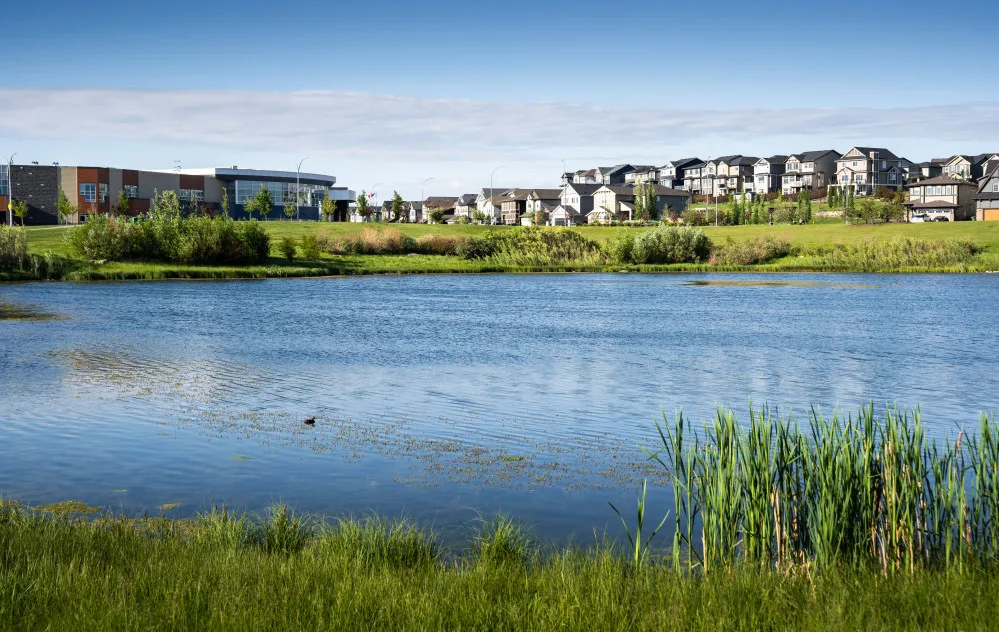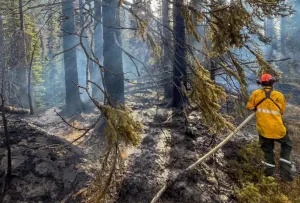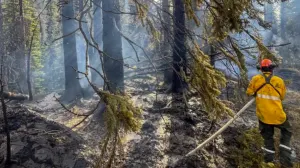
When the forces of nature are the answer to nature’s force
The costs and damages of flooding are overwhelming communities along coasts, near rivers and on big lakes. Across the country, urban floods are happening at a rate and extent that is pushing disaster resilience to the forefront of public safety discussions.
We all pay the price of more frequent flooding, even if the danger and damage are happening in someone else’s town. In fact, the Insurance Institute of Canada reports that the multi-billion-dollar cost of insurance claims is on track to more than double over the course of a decade.
A key part of these costs is the strain being placed on water-management infrastructure. That includes the pipes, sewers, ditches and built facilities that provide our drinking water, drainage and wastewater management. Many growing communities rely on infrastructure that was built in an earlier era for a smaller population—and not likely designed to handle the number of people it now serves.
And now, that stressed infrastructure has to withstand more and bigger storms.
Nature power: How systems like wetlands can help
The good news is that the case is strong for natural systems—wetlands, natural shorelines, floodplains, grasslands and forests—to add nature-powered capacity to the engineered systems we’ve built for water management in towns and cities.
Nature-powered solutions are strategically restored and managed natural systems, such as wetlands, which have the capacity for storm resilience, cleaner water and life-giving diversity of plants and other wildlife. In extreme weather, wetlands hold and filter surface water running off the fields and they make room for rivers when they overrun their banks.
Storms and high waters can cause more damage when land that used to be covered with native vegetation, such as trees and grassland plants, is converted to roads, crops and buildings. The ground has less ability to absorb flood waters, and there are fewer plant roots to reduce shoreline and soil erosion.
Insuring our future: Nature Force
Members of Canada’s insurance industry are exploring the power of nature to reduce flood risks. They’ve joined with Ducks Unlimited Canada (DUC), a conservation charity, in a landmark initiative to fund community-based projects that expand our understanding of nature-powered solutions in areas surrounding urban centres.
It’s called Nature Force and it marshals the resources of a group of 16 property and casualty insurance companies around natural infrastructure innovation. It isn’t a surprise that insurers would understand the need for change on the landscape.
“Canada’s property and casualty insurance industry doesn’t want to stand by idly while our policyholders face unprecedented claims in the face of severe weather events which are increasing in frequency and severity,” said Tina Osen, Nature Force partner as president of HUB International in Canada, adding “we hope that our collective investment in natural infrastructure will inspire positive and measurable change in our communities.”
In its first year, the Nature Force partnership has narrowed in on three highly populated areas in British Columbia, Ontario and Quebec where communities are grappling with sea-level rise, overland flooding, or storm surges on lakes.
Learn more: thenatureforce.com
Several years ago, researcher Natalia Moudrak of the Intact Centre on Climate Adaptation (University of Waterloo) made a splash with a report, When the Big Storms Hit, that spelled out the cost-effectiveness of wetlands conservation to reduce the financial impacts of flooding. Her report, which was partly funded by DUC, has led to a steady drip of studies that point the way to nature-based solutions for an escalating problem.
How can upstream wetlands help urban communities? Wetlands can help extend the lifecycle and reduce the costs of built infrastructure, while also supplying many more community benefits including cleaner water, carbon capture and habitat for hundreds of species of wildlife. That’s because these ecosystems excel at storing rainfall and runoff, which reduces the risk of flooding downstream.
For 85 years, DUC has been protecting and restoring Canada’s ecosystems. To date, their national science and operational team has completed more than 12,000 conservation projects and produced more than 700 scientific publications.
These experiences have revealed that we can restore ecosystems, including wetlands, rivers, forests, coastal marshes and other naturally occurring systems, and we can often re-connect these features to restore functional systems.
These are urgent problems. With meaningful investment and a deep shift in how we value the natural infrastructure in our communities, we can scale up to a comprehensive strategy that can change the landscape around us.










